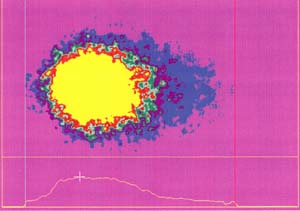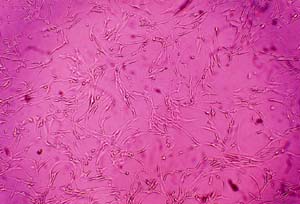| 2004 |

|
YEAR BOOK |
Athlone Institute of Technology
|
Endocrine Disrupters Research Group at AIT
|

|

|

|
Signals from humans, fish and wildlife populations, with evidence from experimental toxicology, have led to an emerging hypothesis that the normal operation of the endocrine system can be disrupted by a range of oestrogen mimics.
Oestrogen mimics include natural and synthetic hormones, pesticides, some metals, industrial chemicals used in the manufacture of paints and detergents, phthalates from the plastics industry, some pharmaceuticals and cosmetics. They have been identified in industrial and domestic sewage effluent, leachates from solid waste disposal sites and agriculture, urban run-off, atmospheric fall-out, bathing waters and associated sediments.


Oestrogens have been implicated in contributing to low sperm counts in healthy adults and in various cancers of the reproductive system. For humans, the link between environmental oestrogens and the increasing incidence of breast cancer is well documented. Oestrogens influence many developmental and physiological responses in target cells by regulating the activity of specific genes. As a result, there is substantial correlation between the effect of oestrogen mimics and the induction of genotoxicity. Very little evidence is currently available at a genotoxic level for these oestrogen mimics. The link between carcinogenicity and mutagenicity is well established, with 90% of all mutagens being carcinogenic: thus genotoxic assessments of municipal and industrial effluent are a focal point.
The observed detrimental health effects and their link with xeonoestrogens are tempered by the lack of appropriate technology to highlight this ever-increasing problem. One of the biggest obstacles encountered is the fact that environmental oestrogen mimics are of widely diverse chemical structures, therefore precluding the accurate prediction of oestrogen activity on the basis of structure alone. Their identification and potency must be defined by bioactivity. The absence of effective bioassay screening procedures is considered to be the main cause of the lack of regulatory action pertaining to these compounds.
The aim of the Endocrine Disrupters Group at AIT is to assess sewage, industrial effluent, and bathing waters in Ireland for oestrogen mimicking chemicals with a view to establishing causal relationships between impact and exposure. The focus of the research is the establishment of a precise battery of tests that will underpin the cellular and molecular mechanisms upon which the oestrogenic response is dependent. This will be addressed in terms of accelerated extraction and selective detection, genotoxicity, mutagenicity, cytotoxicity, ecotoxicity, and oestrogen binding studies. This battery of tests must serve as a rapid screening mechanism for the ever-increasing number of chemicals and their degradation products entering our waterways, with a view to providing quantification data for oestrogenic compounds in an Irish context, which could be incorporated into framing legislation for the protection of aquatic systems.
Contact: Dr Cepta Brougham (Molecular Biology),
School of Science, Athlone Institute of Technology;
Tel: 353-902-24434; E-mail: [email protected] ;
Mr Andy Fogarty (Ecotoxicology), E-mail: [email protected] ;
Mr Jim Roche (Chemistry), E-mail: [email protected] ;
Dr Don Faller (Pharmacology), E-mail: [email protected]